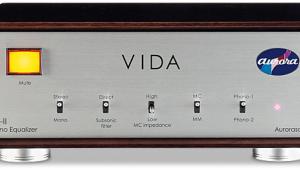Lehmann Statement (£350)

Founded in 1988, Germany’s Lehmann Audio offers an extensive series of phono stages which employ technology drawn from its pro-audio range of mixing consoles and the like. All Lehmann phono stages are based around passive RIAA filter designs and, according to Lehmann, the differences between models can be found ‘in the quality of the parts and/or in the grade of sophistication of the circuit design.’
The Statement is the base model in Lehmann’s entry level ‘Black Cube’ range and and sits below the original £450 Black Cube and the £635 twin-box SE. It comes in a fairly ordinary black box made from non-magnetic aluminium, sporting a top cover coated with a ‘special anti-resonance treatment’.
Its RIAA equalisation network employs high precision foil capacitors, and all its resistors are of the low-noise metal film variety. The Lehmann offers standard load settings of 47kohm for high output MM/MC cartridges and 100ohm/1kohm for lower output MCs. As with the other models in the Black Cube series, the Lehmann boasts a fifth onboard dip switch that can be fitted with a custom impedance setting, tailor matched to any cartridge. The chunky earth post will take bare cable, a spade connection or banana plug. A blue LED shows if the supplied wall-wart adapter is delivering power.
SHOWING ITS ROOTS
You can certainly tell that phono preamps are Lehmann’s speciality when putting it through its paces. Instruments and vocals sounded accurate, having a ‘studio-like’ honesty. Neil Young’s harmonica was conveyed with a polished yet mellow treble and came across with none of the harshness that some of the others in the test introduced. Overall the Lehmann has a well-mannered, pleasing tone which will not fatigue. With ‘Spiralling’ this occasionally worked against it, as the piano notes had a softness to them that meant they became overshadowed in the mix, reducing the song’s atmospherics.
On the other hand its soundstaging is impressively wide, Young’s slide guitar on ‘Out On The Weekend’ emphasising how well the Lehmann does stereo separation. Bass was well captured and natural, although it sounded lighter through the Lehmann in comparison to other models on test, such as the M1 ViNL.
Percussion was precise and controlled while being carefully held back in the mix, which added depth and realism to the music, especially through the shimmering cymbals within ‘Spiralling’. With the Respighi piece, the bottom end could sound a little thin, diluting the piece’s imposing scale, but not to the point of robbing the orchestra of its majestic range.
Well-recorded vocals are lapped up by the Lehmann, so where the Clearaudio conveyed the power of a performance, this Black Box went one step further by capturing the tone of the voice. Sure enough, the Statement may not enjoy the gravitas of costlier phono stages like the R32, but it’s a prince in its realm.
Originally published in the January 2012 issue

























































